Computing
Love, Joy, Respect and Excellence.
“Computing is not about computers any more. It is about living.”
Nicholas Negroponte
(Author of “Being Digital”)
We teach children about computing, so they are able to:
- To use computational thinking and creativity to understand the world.
- To be responsible, active and confident participants in a digital world, linking to and enriching learning.
- To competently express themselves and develop their ideas using ICT within a connected world.
At Stanground St. John’s our pupils have the right to have rich, deep learning experiences that balance all the aspects of computing. With technology playing such a significant role in society today, ‘Computational thinking’ is a skill children must be taught if they are to be able to participate effectively and safely in this digital world.
A high-quality computing education equips pupils to use creativity to understand and change the world. Computing has deep links with mathematics, science, and design and technology, and provides insights into both natural and artificial systems. The core of computing is Computer Science in which pupils are introduced to a wide range of technology, including Chrome books, ipads and interactive whiteboards, allowing them to continually practice and improve the skills they learn. This ensures they become digitally literate so that they are able to express themselves and develop their ideas through information and computer technology– at a level suitable for the future workplace and as active participants in a digital world.
The computing curriculum enables children to become effective users of technology who can:
- Understand and apply the essential principles and concepts of Computer Science, including logic, algorithms and data representation;
- Analyse problems in computational term, and have repeated practical experience of writing computer programs in order to solve such problems;
- Evaluate and apply information technology analytically to solve problems;
- Communicate ideas well by utilising appliances and devices throughout all areas of the curriculum.
Computing capability is an essential skill for life and enables learners to participate more readily in a rapidly changing world. Using the Internet and email, for example, gives them rapid access to ideas and experiences from a wide range of people, communities and cultures.
Learning about control systems increases children's awareness of many of the operating systems we use to manage our everyday lives.
Purplemash
At Stanground St John's we use the Purplemash scheme of learning for the teaching of Computing. This covers all aspects of the National Curriculum, ensures coverage of the computing programme of study and progression through each year group.
Common threads of Computing:
Computer Science
- Coding and Computational thinking
- Communication and networks
- Databases and graphing
Information Technology
- Spreadsheets
- Art and Design
- Writing and Presenting
Digital Literacy
- Internet and Email
- Online Safety
Key Stage 1 National Curriculum Expectations
Pupils should be taught to:
- understand what algorithms are; how they are implemented as programs on digital devices; and that programs execute by following precise and unambiguous instructions;
- create and debug simple programs;
- use logical reasoning to predict the behaviour of simple programs;
- use technology purposefully to create, organise, store, manipulate and retrieve digital content;
- recognise common uses of information technology beyond school;
- use technology safely and respectfully, keeping personal information private; identify where to go for help and support when they have concerns about content or contact on the internet or other online technologies.
Key Stage 2 National Curriculum Expectations
Pupils should be taught to:
- design, write and debug programs that accomplish specific goals, including controlling or simulating physical systems; solve problems by decomposing them into smaller parts;
- use sequence, selection, and repetition in programs; work with variables and various forms of input and output;
- use logical reasoning to explain how some simple algorithms work and to detect and correct errors in algorithms and programs;
- understand computer networks including the Internet; how they can provide multiple services, such as the world wide web, and the opportunities they offer for communication and collaboration;
- use search technologies effectively, appreciate how results are selected and ranked, and be discerning in evaluating digital content;
- select, use and combine a variety of software (including Internet services) on a range of digital devices to design and create a range of programs, systems and content that accomplish given goals, including collecting, analysing, evaluating and presenting data and information;
- use technology safely, respectfully and responsibly; recognise acceptable/unacceptable behaviour; identify a range of ways to report concerns about content and contact.
Online Safety
At Stanground St John's we teach online safety to every year group, at an age appropriate level. Reminders are given at the start of every computing lesson about online safety, regardless of lesson content.
The children are taught the phrase 'see it, say it, sorted'.
